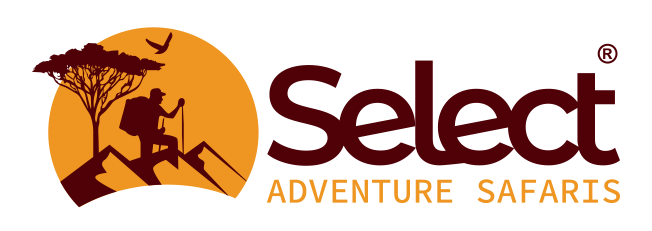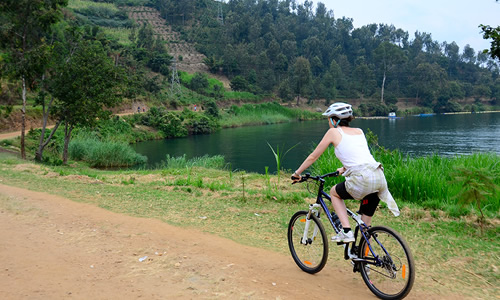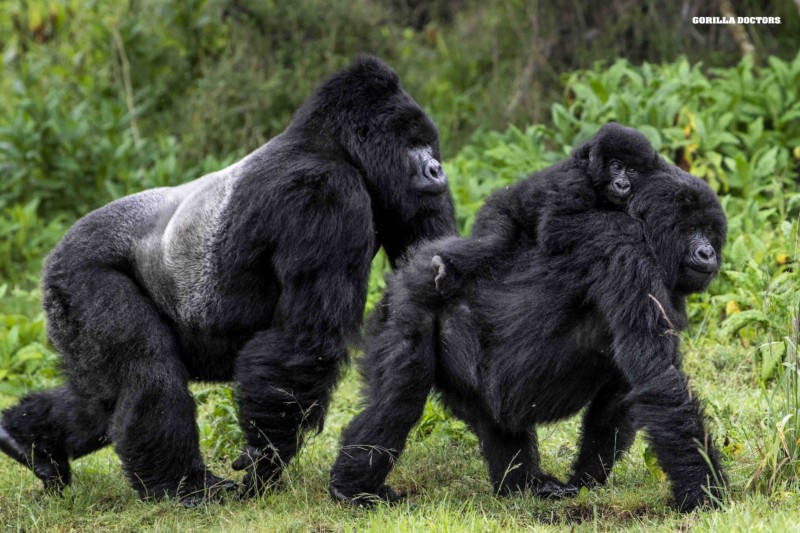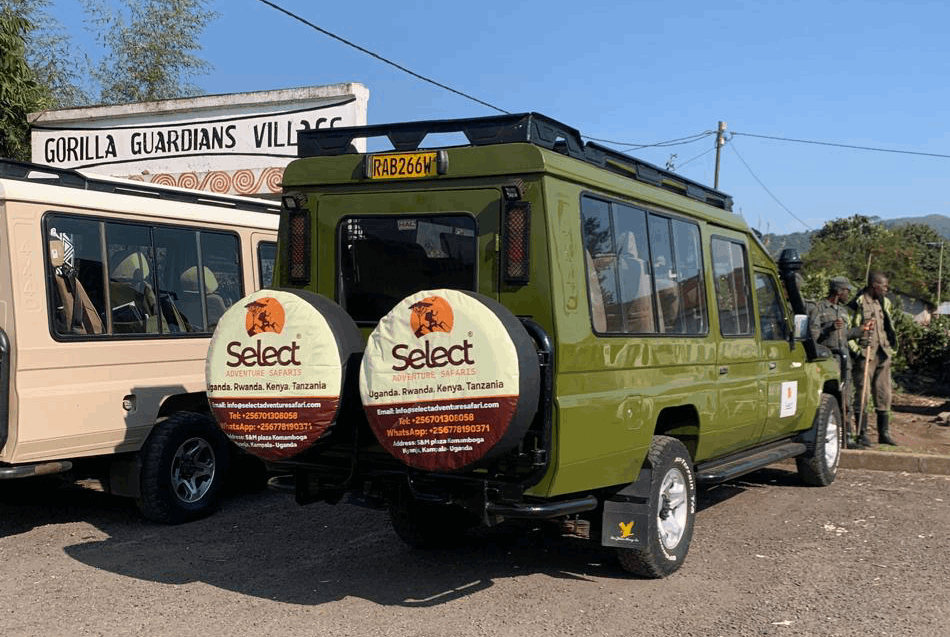Golden Monkeys
Golden Monkeys : Given its remarkable golden coloring, it should come as no surprise that the Golden Monkey earned its moniker. The brilliant, vivid orange of the Golden Monkey’s tails, cheeks, and spots on its back and torso provide a striking visual contrast with its jet-black legs and head.
It is native to the Virunga Mountains of Central Africa and belongs to the family of Old World monkeys. Only in Uganda’s Mgahinga National Park, which shares a southwest tri-border with Rwanda and the Democratic Republic of the Congo, is it visible.

The Golden Monkey was once thought to be a subspecies of the Blue Monkey and was not acknowledged as a distinct species. These two monkeys are actually very similar to each other and closely related.
The range of the Cercopithecus species has become fragmented due to the continuous division of forests, resulting in isolated populations that have adapted to their new surroundings. The monkey has split off from the Blue monkey as a result.
Uganda’s golden monkey population: habits and behavior
The Habits and Behavior of Golden Monkeys
There are thought to be between 2000 and 4000 golden monkeys in the world. It is classified as Endangered under criterion B1ab (i, ii, iii) on The IUCN Red List of Threatened Species.
They are very gregarious animals that gather in groups of 30 to 80 people, with an Alpha male in charge. Elevation affects group size; in general, groupings at higher elevations are smaller.
Males typically join the group for a short time before departing, but females are always present to defend the territory.
These arboreal, nocturnal monkeys spend their nights perched on bamboo trees. Golden monkeys sleep in smaller groups of four or fewer people on average.
Golden monkey foods and where they sleep.
A herbivore, the golden monkey is also a frugivore. It consumes fruits, flowers, shrubs, branchlets, shoots, and bamboo leaves. Occasionally, it will also eat invertebrates like the pupae of lepidopterous larvae that are found on leaves.
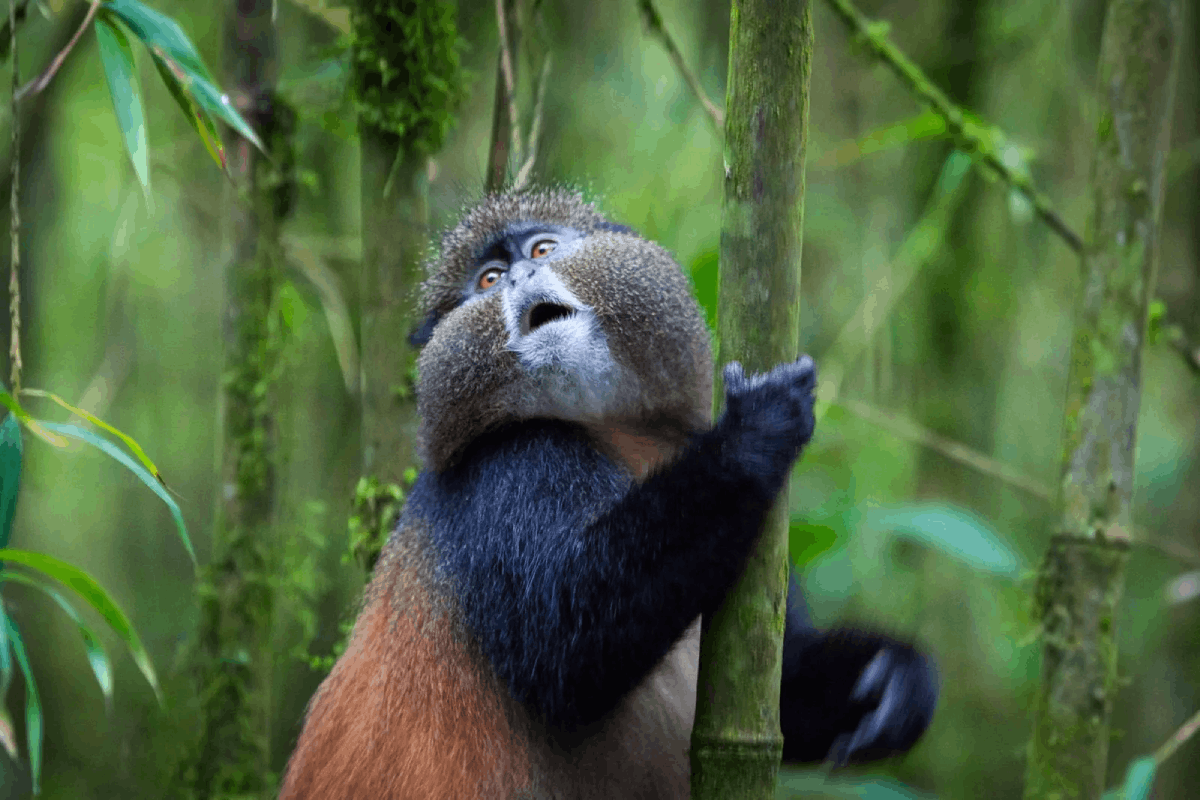
They travel every day to forage because feeding grounds are typically close to their sleeping spots.
The golden monkey not only makes its homes out of bamboo, but it also uses it as food. Goldens are incredibly intelligent animals that can weave together numerous bamboo plants to create “beds.”
The monkeys will roam during the day to feed, but they will return to these beds for rest each night, in contrast to the mountain gorillas who construct a nest every night.
Golden monkeys in the Virunga Mountains’ Mgahinga Bamboo Forest
Interaction
The main means of communication for these primates are facial expressions and different vocalizations. Some of these vocalizations are used by males to protect their territory or in fights. Women make a variety of calls to keep the group together and warn neighbors about possible dangers.
Subadults, meanwhile, have been observed to use particular cries in conjunction with mobbing behavior. It’s also possible for young people to vocalize their submission.
How to visit Mgahinga National Park in soutUgandahern to observe the golden monkey
How to view goldenUganda’s monkeys
The slopes of the volcano mountains in Mgahinga National Park are the only places to get up close and personal with golden monkeys in their native habitat. At the southernmost point of the Ugandan border, Mgahinga guards the Ugandan side of the Virunga Mountains.
Basically, you will need to travel 500 kilometers on a paved highway from Kampala to Kisoro town, from which you would need to connect for a further 11 kilometers to the Mgahinga visitor center located in Kanyanchu. Kisoro offers good lodging options for all kinds of visitors.
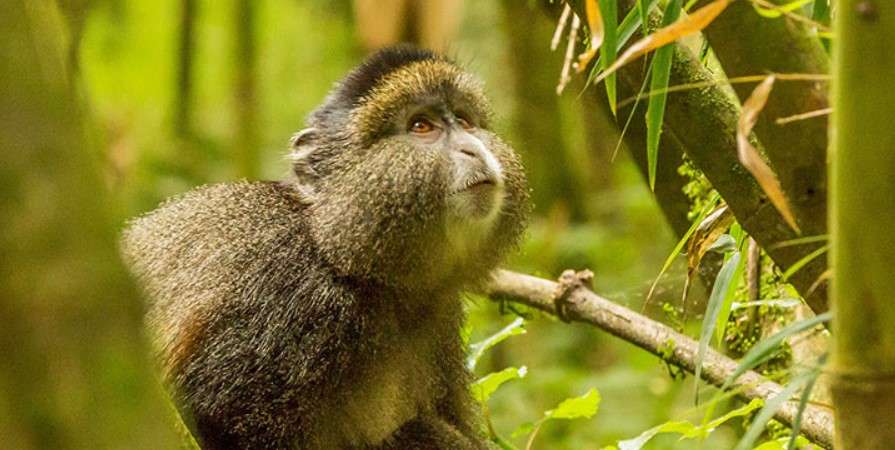
The park is managed by the Uganda Wildlife Authority, which also has certain groups of golden monkeys conditioned for tourism. The mountain gorillas, who share the park with the adorable tiny primates, receive more attention than the former. So, on the daily morning golden monkey trekking tour, you won’t be walking with large groups of people.
For the golden monkey permit, UWA charges foreigners USD 60, foreign residents USD 50, and nationals UGX 40K. However, that just covers the costs of guided ranger hiking and conservation, and it doesn’t cover the $40/$30/20K park entrance fees per person. It also doesn’t allow visitors to spend an hour with the golden monkey family.
For those interested in a 4-hour experience with the monkeys, the park offers a semi-habituated troop called the Golden Monkey Habituation Experience. The cost for foreign visitors is US$100, but EAC nationals must pay UGX 100,000.
The UWA office sells the golden monkey tracking permit, or you can get it from a certified tour operator who can arrange your complete trip.
